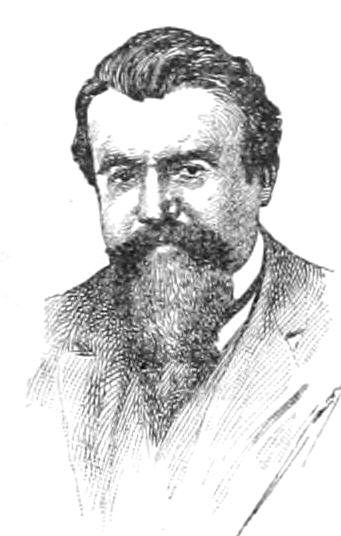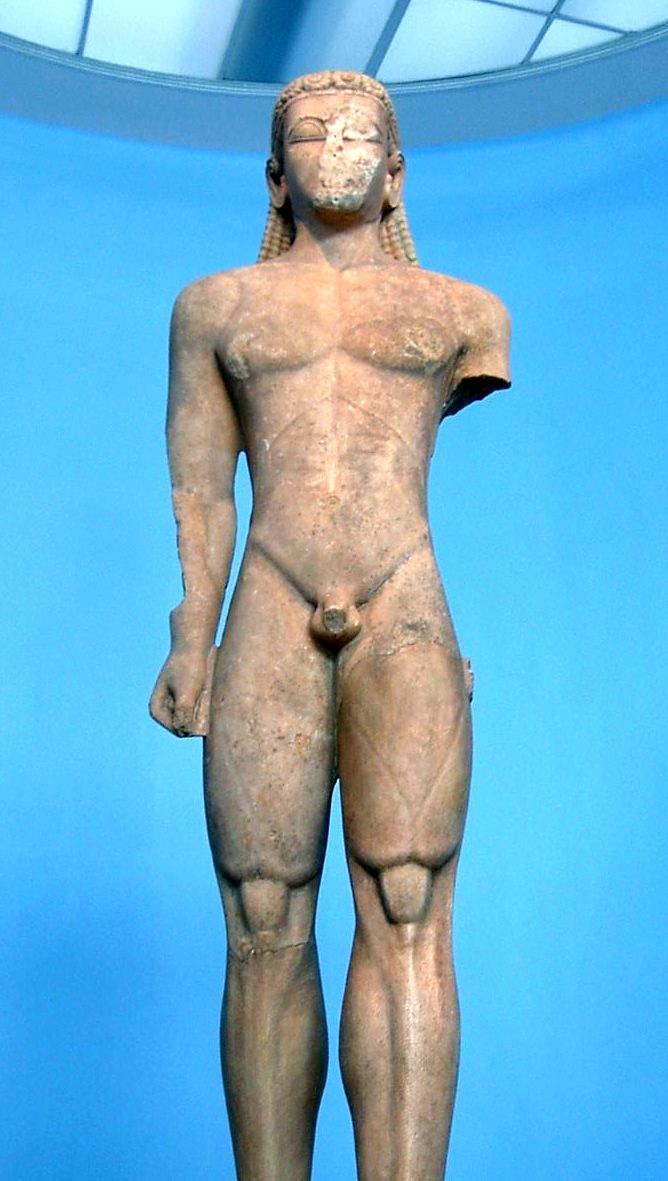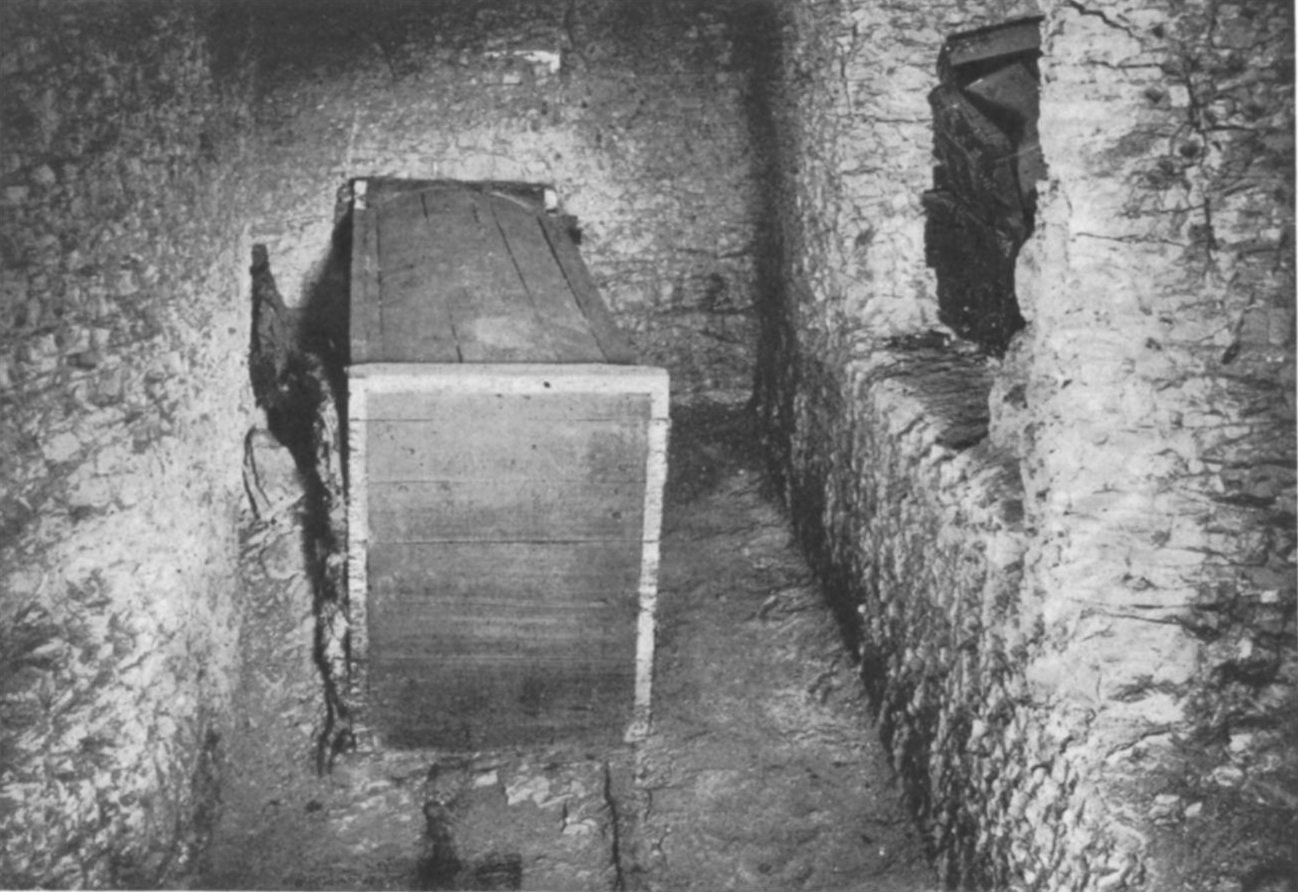|
1906 In Archaeology
Below are notable events in archaeology that occurred in 1906. Explorations * Christiana Herringham begins copying the Ajanta Caves paintings. Excavations * Hugo Winckler begins excavations at Hattusa near Boğazköy in Turkey for the Deutsche Orient-Gesellschaft with Theodore Makridi which identify it as the royal capital of the Hittites (continue to 1911). * Richard MacGillivray Dawkins begins excavations at the Sanctuary of Artemis Orthia in Sparta (continue to 1910). * T. May begins excavations of the Principia of the Roman fort at Bremetennacum (Ribchester), Lancashire, England (continue to 1907). * Excavations at Lisht are resumed by the Egyptian Expedition of the Metropolitan Museum of Art, New York (continue for 14 seasons to 1934). * Approximate date – Antonios Keramopoulos begins systematic excavations of Mycenaean Thebes, Greece, starting at the Kolonaki hill (continue to 1921). Finds * Mummy of Senebtisi at Lisht in Egypt. * The Sounion Kouros at ... [...More Info...] [...Related Items...] OR: [Wikipedia] [Google] [Baidu] |
Ribchester
Ribchester is a village and civil parish within the Ribble Valley district of Lancashire, England. It lies on the banks of the River Ribble, northwest of Blackburn and east of Preston. The village has a long history with evidence of Bronze Age beginnings. It is well known as a significant Roman site being the location of a Roman cavalry fort called Bremetennacum, some parts of which have been exposed by excavation. In common with many towns and villages in East Lancashire its later history was dominated by cotton weaving; firstly in the form of hand-loom weaving and later in two mills. Neither mill still operates and the village is primarily a dormitory village for commuters to the town of Blackburn and the cities of Preston and Manchester. The main access road into Ribchester is the B6245. From the north-west, this is Preston Road, which merges into Church Street. From the east, it is Blackburn Road, which, at its westernmost extremity, also links up with Church Street, ... [...More Info...] [...Related Items...] OR: [Wikipedia] [Google] [Baidu] |
Ernest-Théodore Hamy
Ernest-Théodore Hamy (22 June 1842, Boulogne-sur-Mer – 18 November 1908, Paris) was a French anthropologist and ethnologist. He studied medicine in Paris, earning his doctorate in 1868. Afterwards, he served as a ''préparateur'' under Paul Broca in the laboratory of anthropology at the Ecole pratique des hautes études. In 1872 he became an assistant naturalist at the Muséum national d'histoire naturelle, where he worked closely with Armand de Quatrefages.Prosopo Sociétés savantes de France In 1892 he was appointed professor of anthropology at the Museum. Bérose Hamy, Ernest-Théodore (1842-1908) He was founder and curator of the |
Greece
Greece,, or , romanized: ', officially the Hellenic Republic, is a country in Southeast Europe. It is situated on the southern tip of the Balkans, and is located at the crossroads of Europe, Asia, and Africa. Greece shares land borders with Albania to the northwest, North Macedonia and Bulgaria to the north, and Turkey to the northeast. The Aegean Sea lies to the east of the Geography of Greece, mainland, the Ionian Sea to the west, and the Sea of Crete and the Mediterranean Sea to the south. Greece has the longest coastline on the Mediterranean Basin, featuring List of islands of Greece, thousands of islands. The country consists of nine Geographic regions of Greece, traditional geographic regions, and has a population of approximately 10.4 million. Athens is the nation's capital and List of cities and towns in Greece, largest city, followed by Thessaloniki and Patras. Greece is considered the cradle of Western culture, Western civilization, being the birthplace of Athenian ... [...More Info...] [...Related Items...] OR: [Wikipedia] [Google] [Baidu] |
Sounion
Cape Sounion (Modern Greek: Aκρωτήριο Σούνιο ''Akrotírio Soúnio'' ; grc, Ἄκρον Σούνιον ''Άkron Soúnion'', latinized ''Sunium''; Venetian: ''Capo Colonne'' "Cape of Columns") is the promontory at the southernmost tip of the Attic peninsula, south of the town of Lavrio (ancient Thoricus), and 69.5 km (43.1 miles) southeast of Athens. It is part of Lavreotiki municipality, East Attica, Greece. Cape Sounion is noted for its Temple of Poseidon, one of the major monuments of the Golden Age of Athens. Its remains are perched on the headland, surrounded on three sides by the Aegean sea. Climate Cape Sounio has a hot semi-arid climate (Köppen climate classification: ''BSh''). Cape Sounio experiences hot, dry summers and mild, wetter winters. Current Weather (2021) Weather records for 2021 in Ilioupoli (as of 31 October 2021) are given below: History The earliest literary reference to Sounion is in Homer's ''Odyssey'' (III. 278–285). ... [...More Info...] [...Related Items...] OR: [Wikipedia] [Google] [Baidu] |
Sounion Kouros
The Sounion Kouros is an early archaic Greek statue of a naked young man or kouros (Ancient Greek κοῦρος, plural kouroi) carved in marble from the island of Naxos around 600 BCE. It is one of the earliest examples that scholars have of the kouros-type which functioned as votive offerings to gods or demi-gods, and were dedicated to heroes. Found near the Temple of Poseidon at Cape Sounion, this kouros was found badly damaged and heavily weathered. It was restored to its original height of 3.05 meters (10.0 ft) returning it to its larger than life size. It is now held by the National Archaeological Museum of Athens. Ancient Greeks were influenced by their Egyptian neighbors when creating kouroi. The Egyptian influence is especially evident in the pose of the figure. Archaic sculptors intended to idealize the human form which is made evident by the modeling of the Sounion Kouros. Sculptors of kouri attempted to convey slight movement and more naturalism over the course o ... [...More Info...] [...Related Items...] OR: [Wikipedia] [Google] [Baidu] |
Senebtisi
Senebtisi was an ancient Egyptian woman who lived at the end of the 12th Dynasty, around 1800 BC. She is only known from her undisturbed burial found at Lisht. Very little is known about Senebtisi. On the objects found in her tomb she has the second name Zathapy (''daughter of Apis''). She bears the common title ''lady of the house''. Her husband or parents are not mentioned in her tomb. The burial of Senebtisi was found by an American expedition in 1907 at Lisht as part of the funerary complex belonging to the vizier Senusret. Her burial was found at the bottom of a shaft in a chamber north of this shaft. The mummified body of Senebtisi was placed in a set of three coffins. There was an outer wooden coffin, inscribed with text, but only badly preserved. There was a middle coffin with only an inscription on gold foil on the lid. The innermost coffin was human shaped but only very badly preserved. Senebtisi was adorned with an array of personal adornments, many of them made es ... [...More Info...] [...Related Items...] OR: [Wikipedia] [Google] [Baidu] |
Mummy
A mummy is a dead human or an animal whose soft tissues and organs have been preserved by either intentional or accidental exposure to chemicals, extreme cold, very low humidity, or lack of air, so that the recovered body does not decay further if kept in cool and dry conditions. Some authorities restrict the use of the term to bodies deliberately embalmed with chemicals, but the use of the word to cover accidentally desiccated bodies goes back to at least 1615 AD (see the section Etymology and meaning). Mummies of humans and animals have been found on every continent, both as a result of natural preservation through unusual conditions, and as cultural artifacts. Over one million animal mummies have been found in Egypt, many of which are cats. Many of the Egyptian animal mummies are sacred ibis, and radiocarbon dating suggests the Egyptian Ibis mummies that have been analyzed were from time frame that falls between approximately 450 and 250 BC. In addition to the mummies ... [...More Info...] [...Related Items...] OR: [Wikipedia] [Google] [Baidu] |
Archaeological Museum Of Thebes
The Archaeological Museum of Thebes is a museum in Thebes, Greece. Mouseio2.jpg Amts105.jpg File:Amth02.jpg Man and antelope, painting on larnax, Tanagra, Late Helladic III, AM Thebes, 0127.jpg Bull-leaping, painting on larnax, Tanagra, Late Helladic III, AM Thebes, 01281.jpg Ithyphallic male figurine on a bird, terracotta, 700-600 BC, AM Thebes, d0111.jpg Kouros from thebes.jpg Black-figure skyphos, Dionysos, turban, female musicians, 520-500 BC, AM Thebes, 0120.jpg Black-figure kantharos, naked dance, AM Thebes, 0105.jpg Red-figure skyphos, satyr, thyrsos, skin of panther, 500-480 BC, AM Thebes, 0118.jpg Kabeiric kantharos, Kabeirion, 5th century BC, AM Thebes, 0117.jpg Kabeiric black-figure skyphos, Kaberion, 430-400 BC, AM Thebes, 0115.jpg Figurines Museum of Thebes.JPG Amth90.jpg Findings - Cave of the Leibethrid Nymphs.JPG File:Encaustic on marble, portrait of a young man from a grave stele, with an inscription ΘΕΟΔΩΡΟΣ ΧΑΙΡΕ Theodoros Farewell 2.png, A Helleni ... [...More Info...] [...Related Items...] OR: [Wikipedia] [Google] [Baidu] |
Thebes, Greece
Thebes (; ell, Θήβα, ''Thíva'' ; grc, Θῆβαι, ''Thêbai'' .) is a city in Boeotia, Central Greece. It played an important role in Greek myths, as the site of the stories of Cadmus, Oedipus, Dionysus, Heracles and others. Archaeological excavations in and around Thebes have revealed a Mycenaean settlement and clay tablets written in the Linear B script, indicating the importance of the site in the Bronze Age. Thebes was the largest city of the ancient region of Boeotia and was the leader of the Boeotian confederacy. It was a major rival of ancient Athens, and sided with the Persians during the 480 BC invasion under Xerxes I. Theban forces under the command of Epaminondas ended Spartan hegemony at the Battle of Leuctra in 371 BC, with the Sacred Band of Thebes, an elite military unit of male lovers celebrated as instrumental there. Macedonia would rise in power at the Battle of Chaeronea in 338 BC, bringing decisive victory to Philip II over an alliance of Thebes ... [...More Info...] [...Related Items...] OR: [Wikipedia] [Google] [Baidu] |
Mycenaean Greece
Mycenaean Greece (or the Mycenaean civilization) was the last phase of the Bronze Age The Bronze Age is a historic period, lasting approximately from 3300 BC to 1200 BC, characterized by the use of bronze, the presence of writing in some areas, and other early features of urban civilization. The Bronze Age is the second pri ... in Ancient Greece, spanning the period from approximately 1750 to 1050 BC.. It represents the first advanced and distinctively Greek civilization in mainland Greece with its palatial states, urban organization, works of art, and writing system.Lazaridis, Iosif et al.Genetic origins of the Minoans and Mycenaeans. ''Nature'', 2017Supplementary Information "The Mycenaeans", pp. 2–3).. The Mycenaeans were mainland Greeks, Greek peoples who were likely stimulated by their contact with insular Minoan civilization, Minoan Crete and other Mediterranean Sea, Mediterranean cultures to develop a more sophisticated sociopolitical culture of their own. The ... [...More Info...] [...Related Items...] OR: [Wikipedia] [Google] [Baidu] |
Antonios Keramopoulos
Antonios Keramopoulos ( el, Αντώνιος Κεραμόπουλος; Vlasti, 1870 – Athens, 13 May 1960) was a Greek archaeologist. He conducted numerous excavations studying Mycenean and classical Greek antiquities during the early 20th century, including excavations at the Agora The agora (; grc, ἀγορά, romanized: ', meaning "market" in Modern Greek) was a central public space in ancient Greek city-states. It is the best representation of a city-state's response to accommodate the social and political order of t ... of Athens, the palace of Mycenae and at Thebes. He also wrote studies about later Greek history. Among other things, he became known as a proponent of the theory of an autochthonous Greek origin of the Vlachs in Greece.A. Keramopoulos (1939), ''Τι είναι οι Κουτσοβλάχοι;'' ('Who are the Koutsovlachs?'), Athens. Quoted in: N.-Ş. Tanaşoca (2001), "''Aperçus'' of the history of Balkan Romanity." In: R. Theodorescu/L. Conley Ba ... [...More Info...] [...Related Items...] OR: [Wikipedia] [Google] [Baidu] |







.jpg)